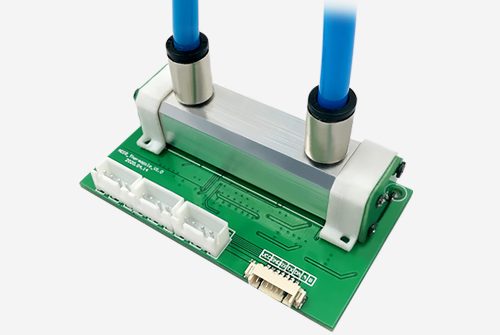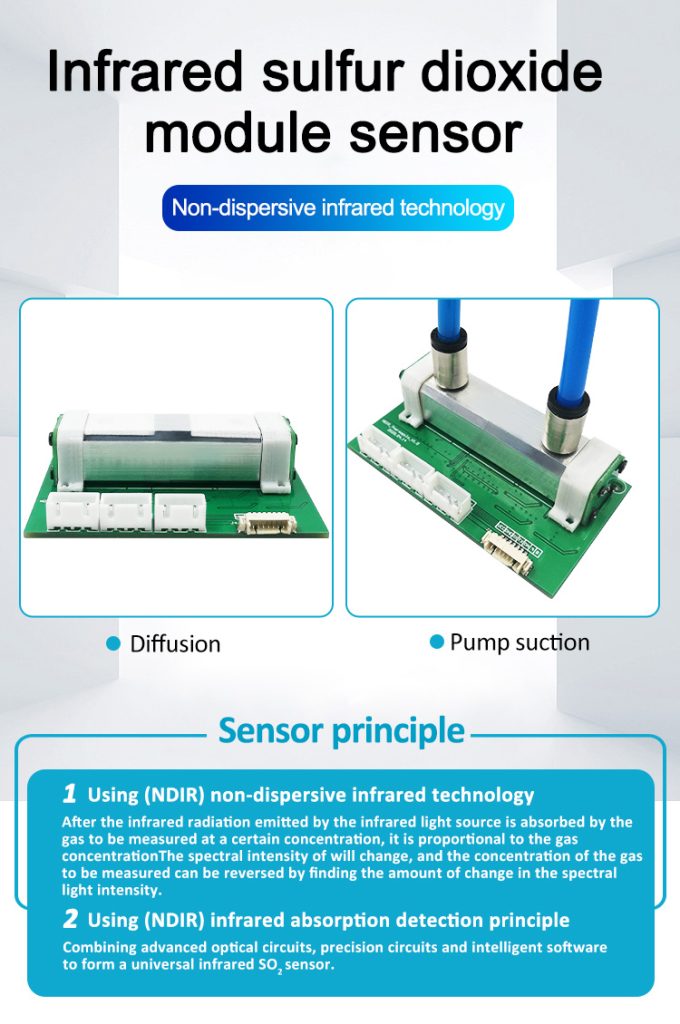A nondispersive infrared (NDIR) sensor serves as a gas sensor for detecting and quantifying gases in the atmosphere, along with their concentrations. NDIR sensors operate on the principle of molecules absorbing specific wavelengths of infrared light. Air samples are collected in a tube and subsequently analyzed under a source of light.

NDIR gas sensors are known for their exceptional precision and sensitivity, making them suitable for a wide range of scenarios where monitoring gases and their concentrations is vital.
These applications encompass industrial safety, environmental monitoring, and medical uses. This article provides an overview of NDIR sensor, outlines their advantages, and explores practical applications.
NDIR Sensors Working Principle
NDIR sensors are primarily employed to measure carbon dioxide, carbon monoxide, methane, and sulfur dioxide.

These gases can pose severe risks in high concentrations, necessitating their monitoring in various settings. Gas sensors, like NDIRs, consist of a sample chamber, an infrared detector, and an infrared light source.
The sample chamber is positioned between the light source and the detector and contains the gas sample intended for analysis. The light source emits infrared light through the sample chamber while the detector quantifies the amount of light that successfully passes through.
Gas molecules interact with infrared radiation, and the radiation-to-incident energy ratio depends on the gas concentration. Gas sensors gauge gas concentration by tracking the reduction in transmitted infrared light.
Applications of NDIR Sensors
NDIR sensors find application in almost every industry, catering to a broad spectrum of monitoring needs. They are utilized in breathalyzers to ascertain blood alcohol levels, detect refrigerant leaks, and oversee toxic gases in hazardous environments. This section sheds light on the environmental, industrial, and medical applications of NDIR sensors.1

Environmental Monitoring
Gas monitoring is essential in many environmental situations, encompassing emissions monitoring from industrial processes, measurement of indoor air quality, and assessment of gas concentrations in the ambient air.
The exceptional sensitivity and precision of NDIR sensors make them an ideal choice. However, humidity and temperature variations can impact their performance, necessitating potential adjustments.
Industrial Applications
In industrial settings, NDIR sensors play a pivotal role in ensuring the safety of personnel and environments by effectively detecting toxic or explosive gases. Particularly in manufacturing facilities, they offer a cost-effective and dependable solution, fortifying worker safety.
Medical Applications
Hospitals utilize infrared sensors to supervise gas concentration levels within anesthesia machines, ensuring the safety of patients during surgical procedures.
Advantages of NDIR Sensors
Numerous advantages accompany the use of NDIR sensor in gas monitoring applications. They present a low-maintenance solution with long-lasting performance. Additional benefits comprise:
- Cost-efficient
- High accuracy and sensitivity
- High selectivity to target gases
- Monitor a range of gases
While NDIR sensor may require a higher initial investment, their advantages translate to lower overall costs as they furnish accurate and reliable gas monitoring over extended periods. As technology progresses, NDIR sensors will continue to advance for more sophisticated monitoring applications.
This information has been sourced, reviewed and adapted from materials provided by JXCT Electronic Technology Co., Ltd.
For more information on this source, please visit JXCT Electronic Technology Co., Ltd.